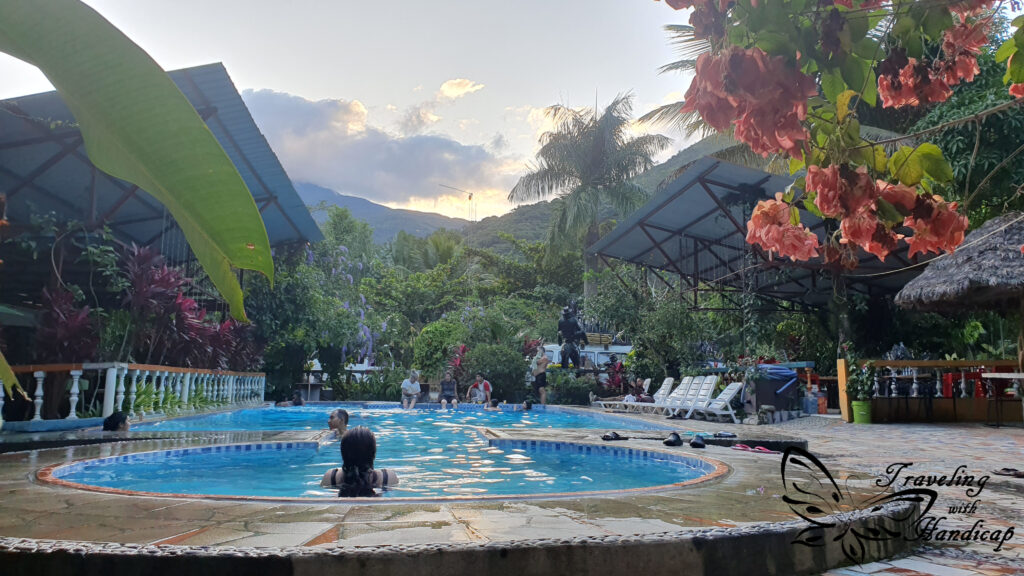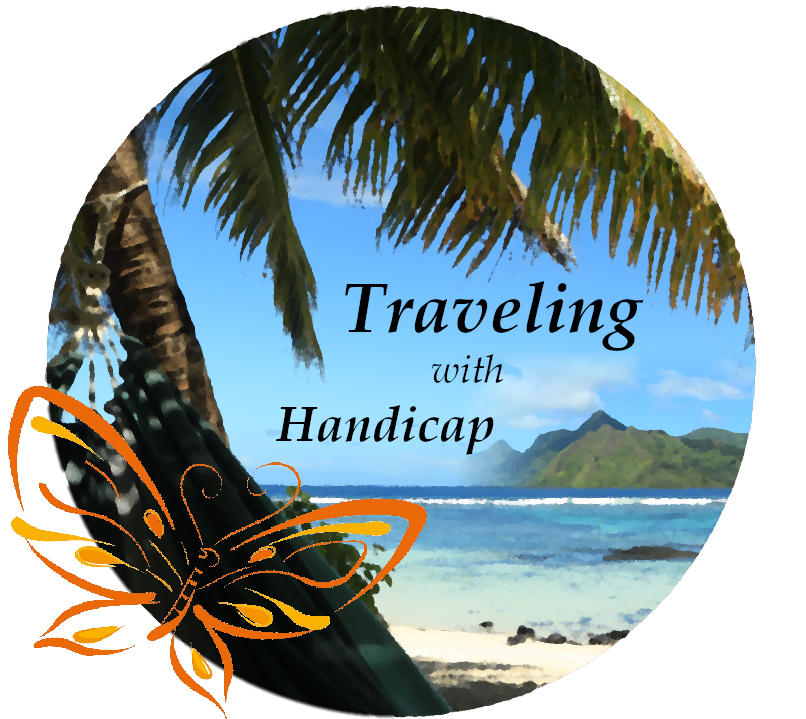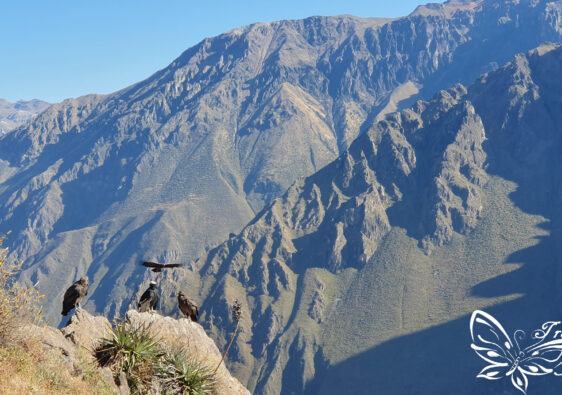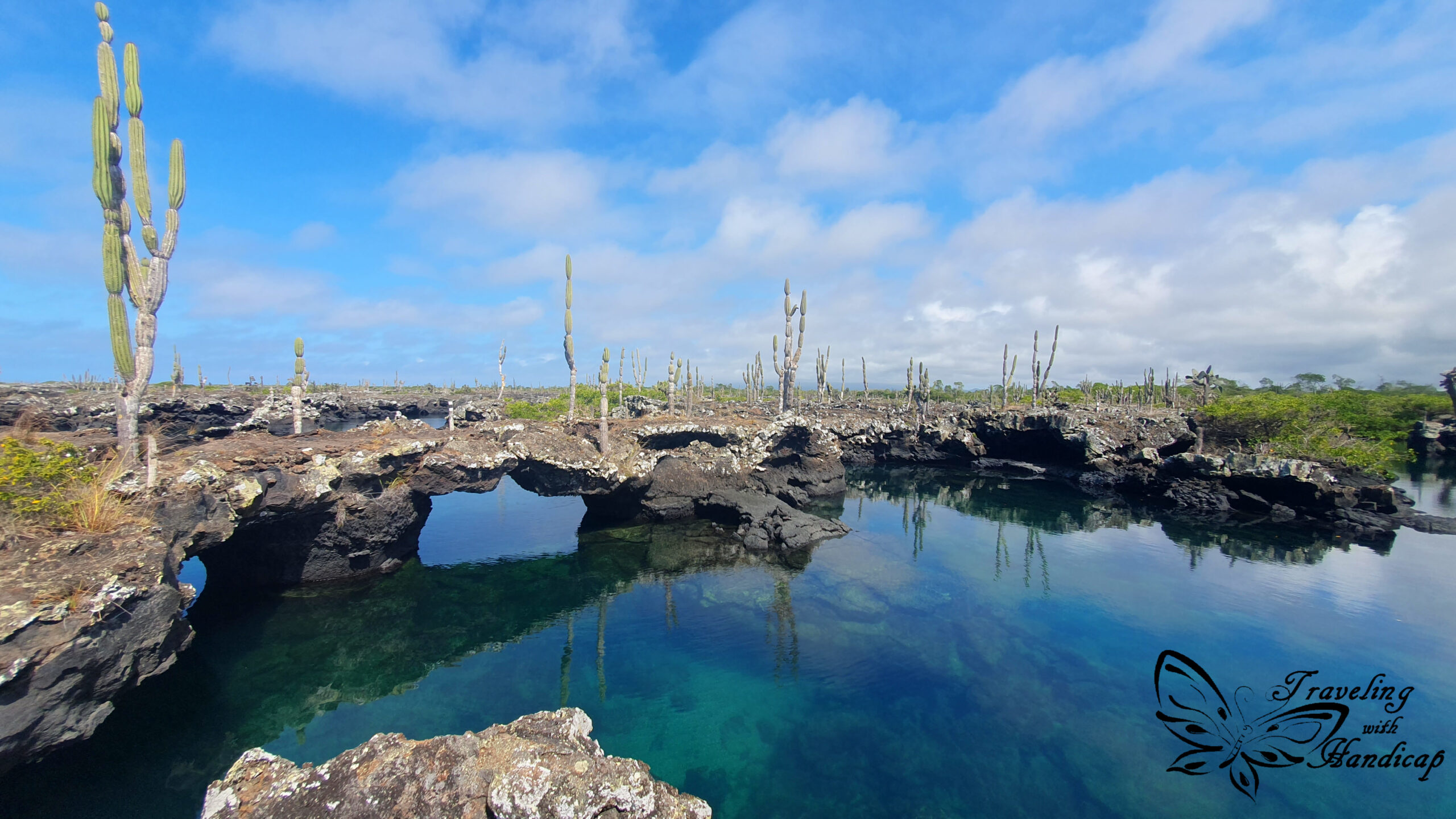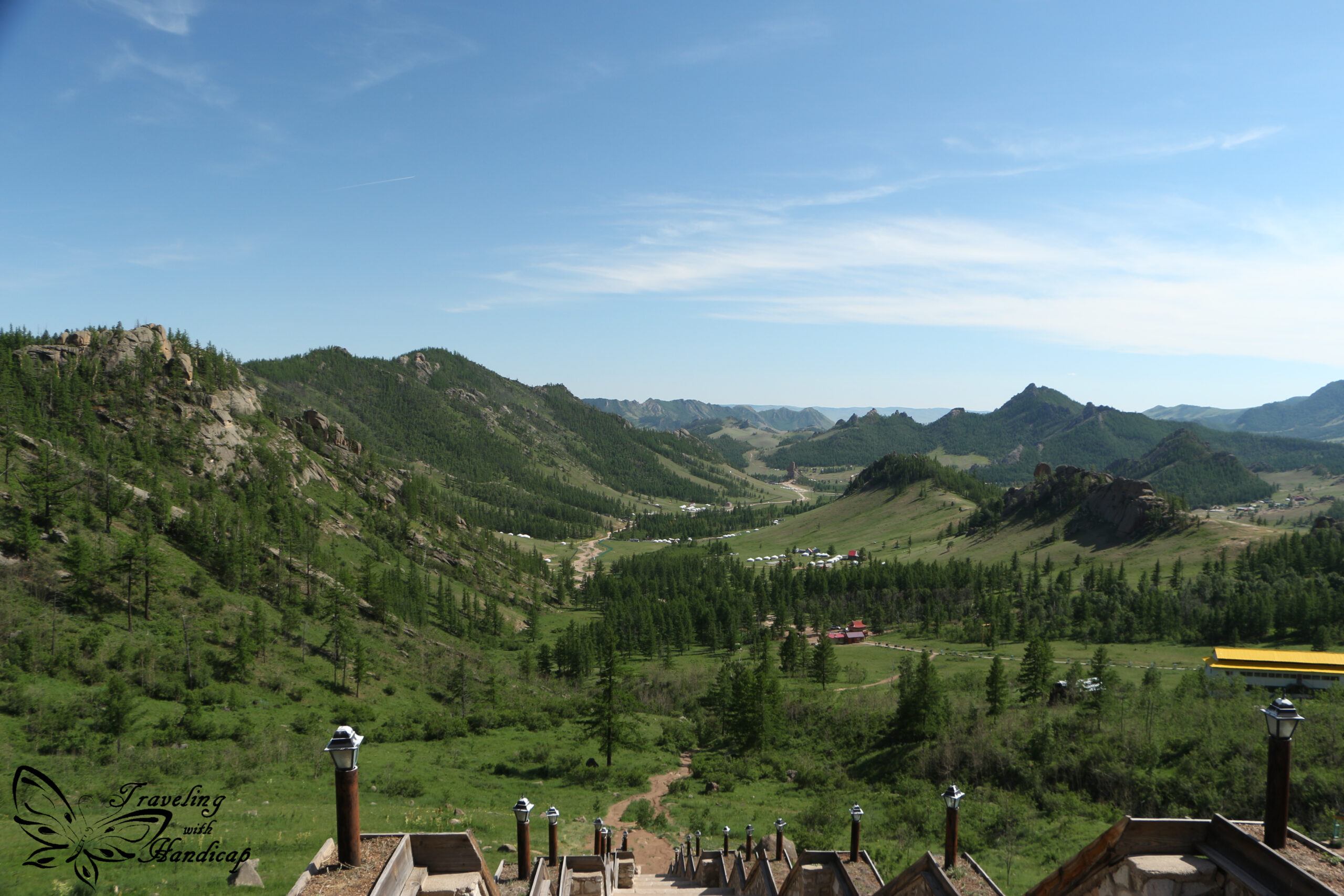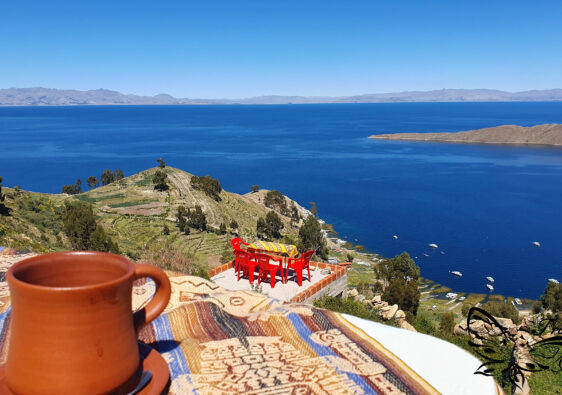La Paz, Bolivia, is the most extraordinary city.
Phil Keoghan
Some facts about La Paz and Bolivia
Firstly, La Paz is the administrative capital of Bolivia. This indicates that all the governmental affairs are handled from La Paz. The official capital is Sucre, though. As such, Bolivia has the distinct situation of having two capitals, depending on the context. Not only does Bolivia have two capitals but also two official flags. Bolivia recognizes the flag of the indigenous people of the region as their second official flag. For any governmental affairs, the two flags need to be present.


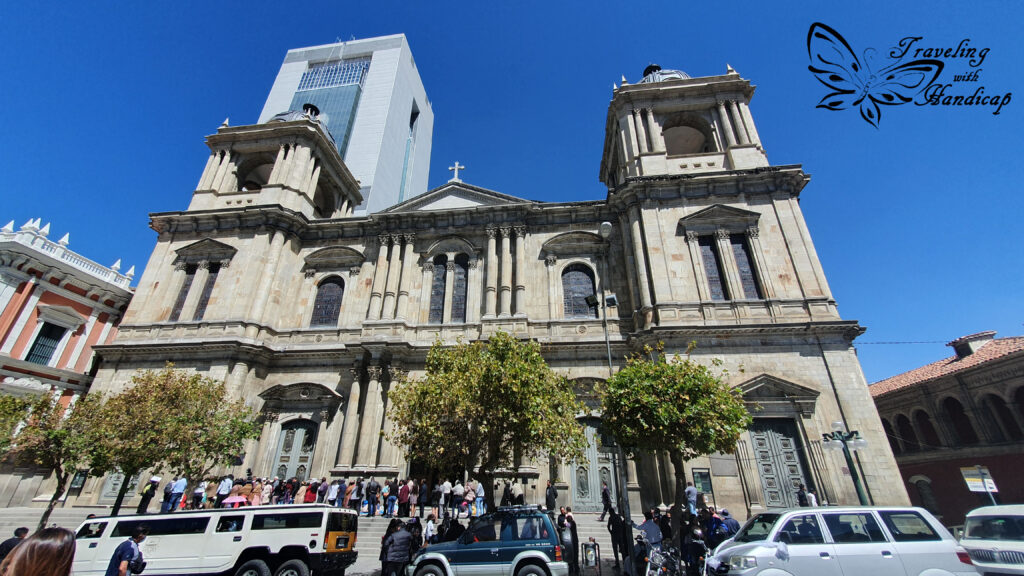
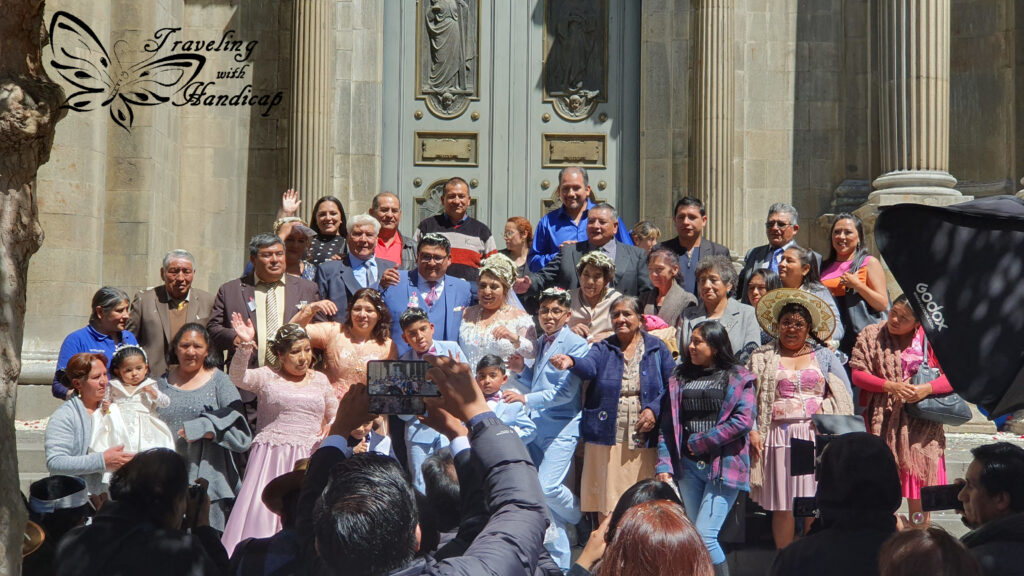

The large majority of houses in Bolivia is not finished. In most cases, you still see the bricks, as the walls are not plastered. This is because people need to pay less tax for their house if it’s unfinished. This is very similar to houses in Guatemala. However, in Guatemala most walls are plastered, only the roofs are not finished. This is – in my perception – an important difference, because due to the many “brick-houses”, most towns in Bolivia are not really nice. It’s more the landscape you come for, with the Uyuni Salt Flats most likely the number one place to visit.
La Paz
La Paz does not deserve any rank in the list of beautiful cities. It covers a huge area of a valley, the flat top (Altiplano) is not part of La Paz anymore but the individual city of El Alto (formerly part of La Paz). Except for the altitude, flat versus valley, there is no space in between the two cities. The large majority of houses is red, not plastered. Only in the center, some business or more formal buildings have been finished.
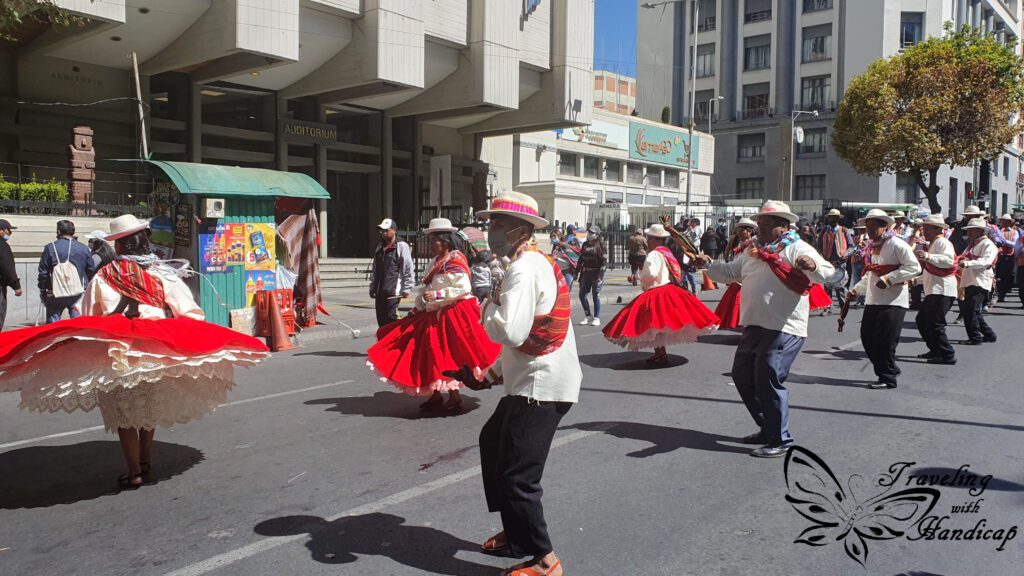
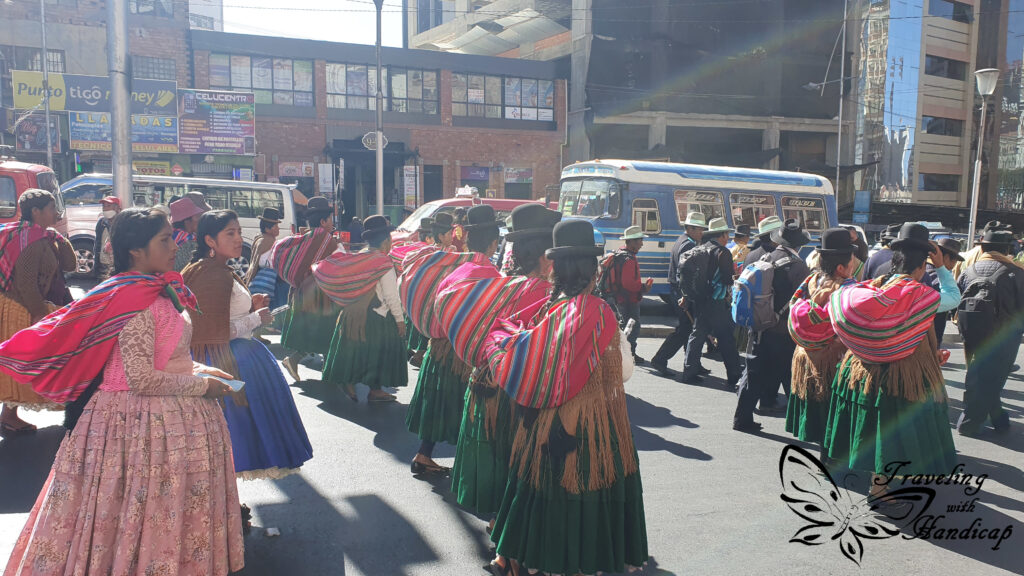
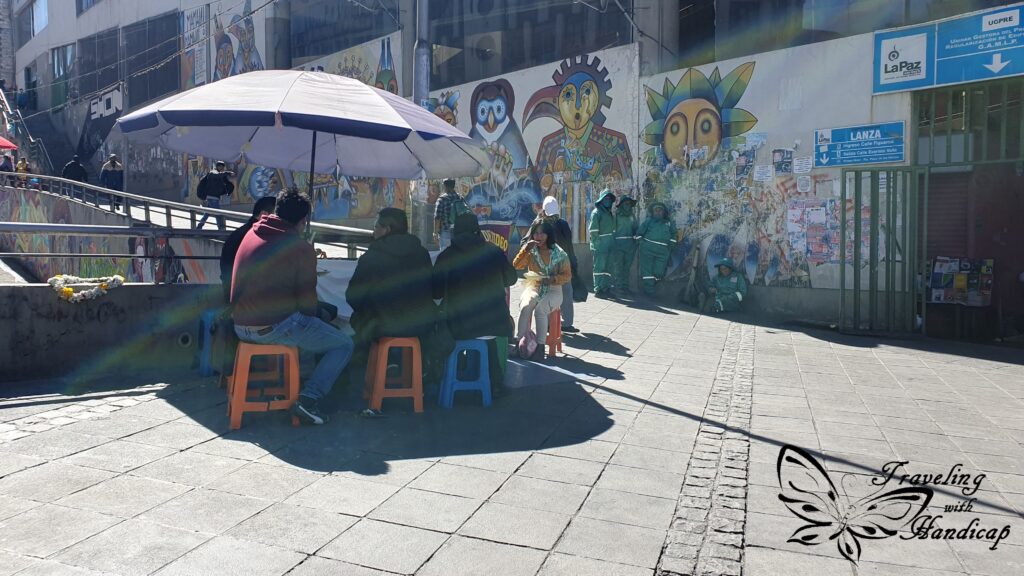

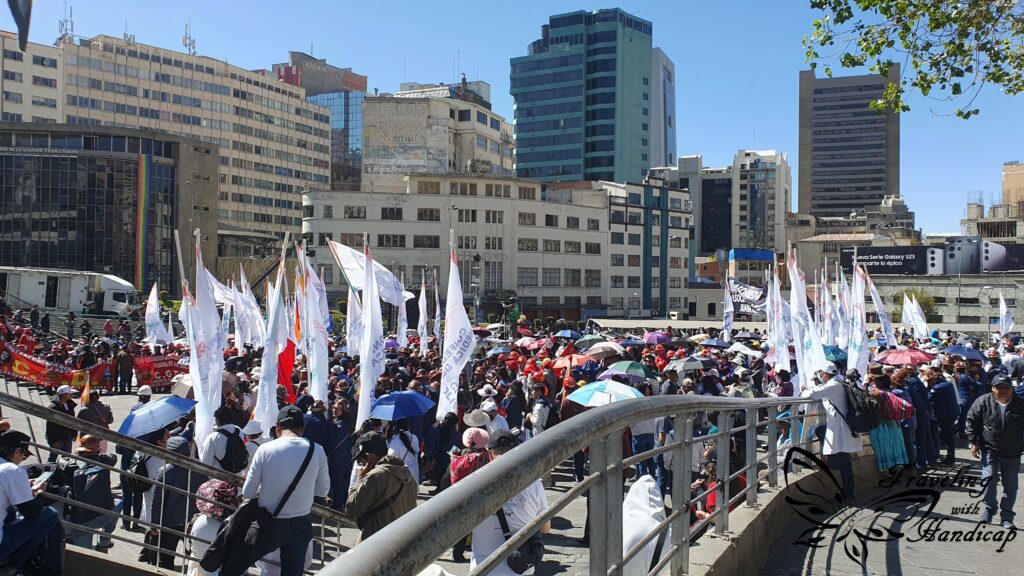


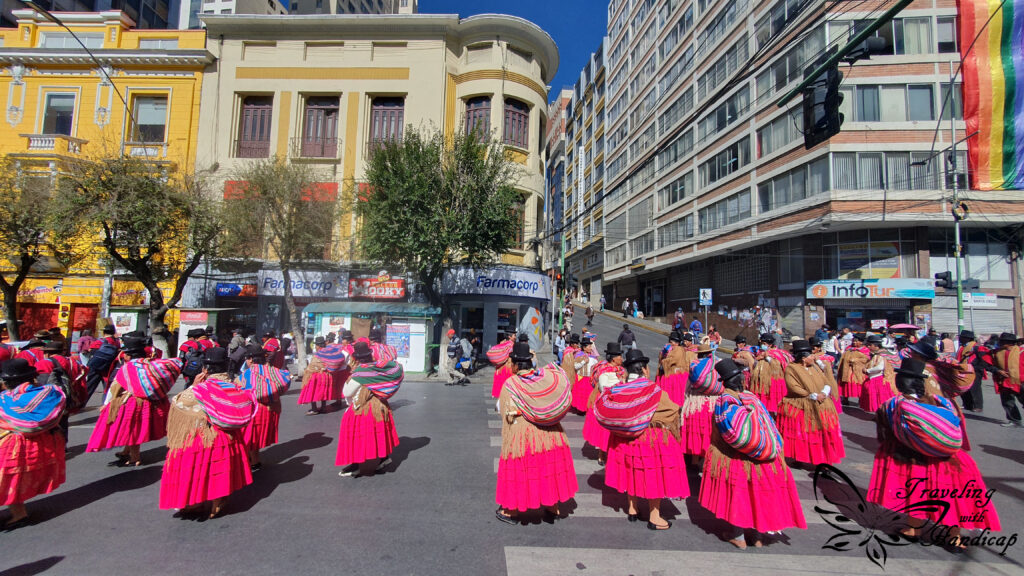
I often read that La Paz would not be safe. However, locals say that it is quite safe. In my opinion, it all depends on the perspective. There may be pickpockets everywhere across the world. Nevertheless, La Paz is said to be very safe for partying (if you don’t get drunk). I am not really up for such parties, I preferred staying at the rooftop restaurant of my hostel watching the conversion from day to night while having a drink or two.
Some curiosities about La Paz
Next to the Plaza San Pedro is a prison, which is an individual town in the city. Whole families live there, inhabitants create their own businesses within the complex. These contain restaurants, running taxis, selling and renting cells and many more, also related to cocaine production.
The entire valley of La Paz consists of houses out of stone. As such, any noise reflects really well. I cannot remember any silent minute while staying in the city. Often, people had some parties or played instruments outdoors. And you could hear it quite well from anywhere.
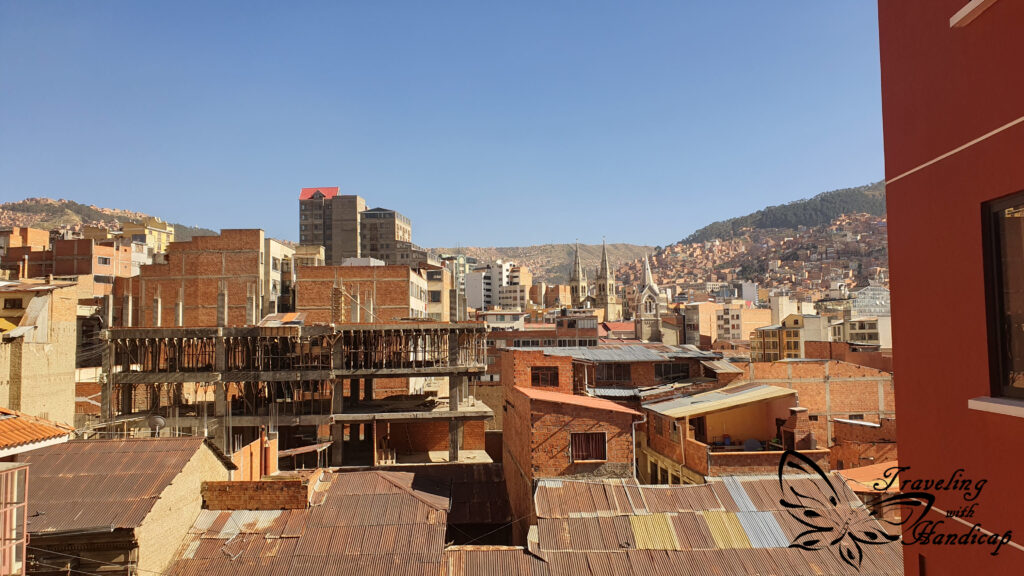
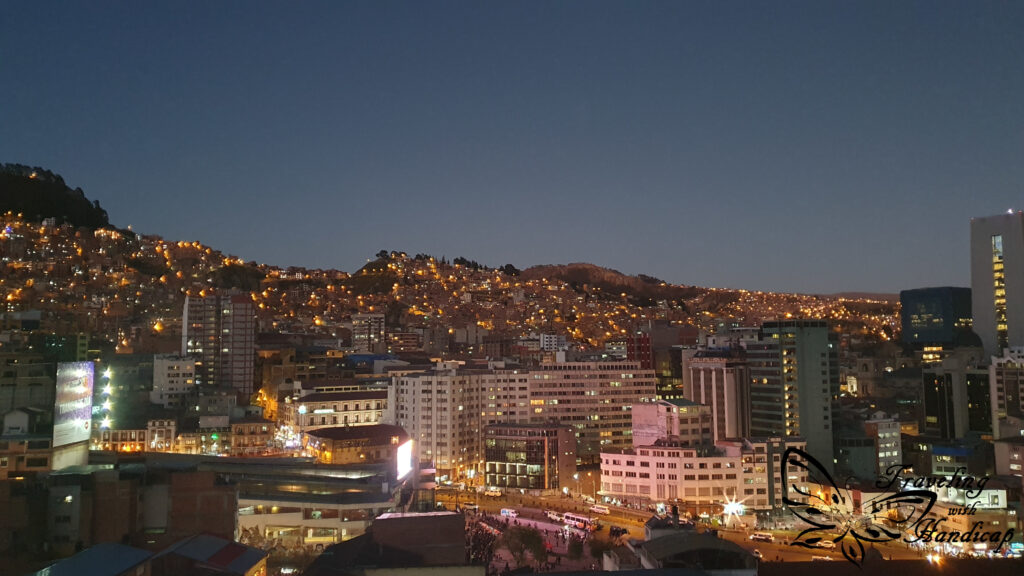
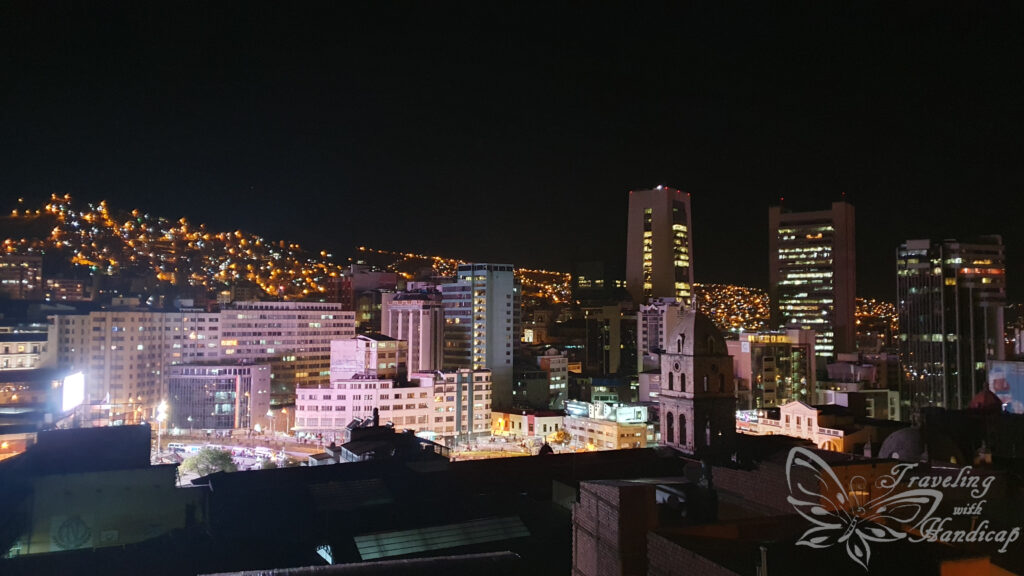
The amount of traffic is literally crazy. This is why the gondolas are a much appreciated change to the street traffic. It is indeed a way of sightseeing to take a full circle in the gondolas. The gondolas connect different parts of the city of La Paz and El Alto with each other. This way, large distances can be covered within a rather short time. Each gondola has a specific color, the ride in the first color costs 3 bolivianos, every other following one 2. This way, a full circle was 11 bolivianos (approximately 1.50 €) and took approximately 2 hours.

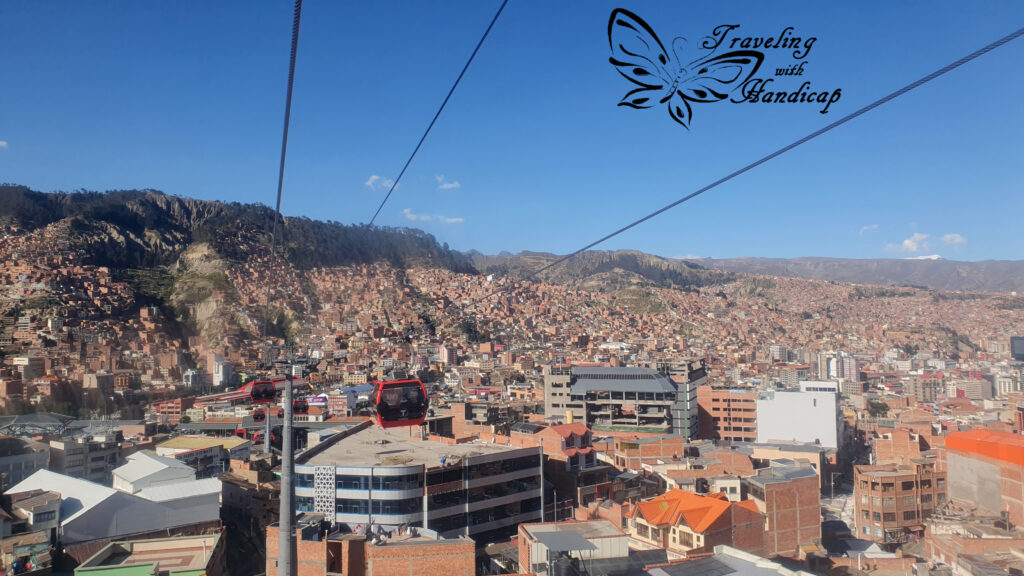
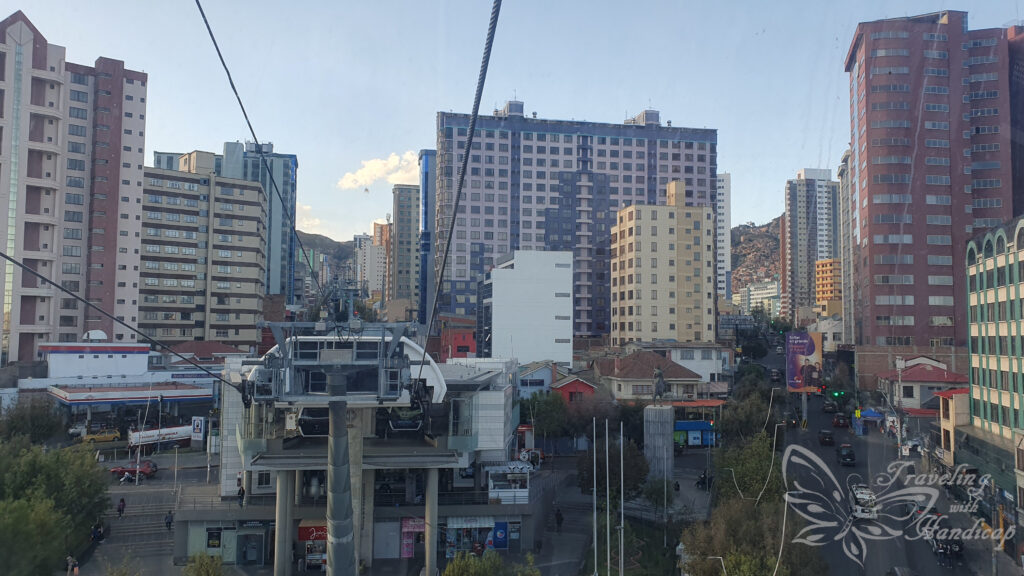



There are many markets across the city. Depending on the street you are in, people sell different things. There is one street in which you can buy carpets, in the next it’s about cloths, in the other bulbs, another one for vegetables. When you go shopping, you always go to the same person (your cholita). This (most of the time) woman is not only your source of fruit, vegetables etc. but also your friend or therapist. Don’t ever try to cheat on your cholita.
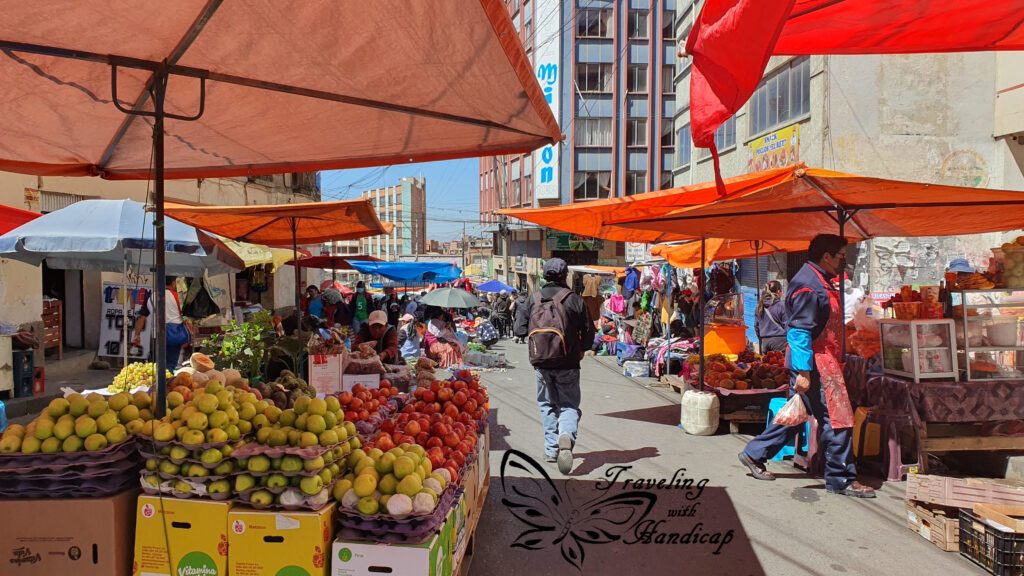


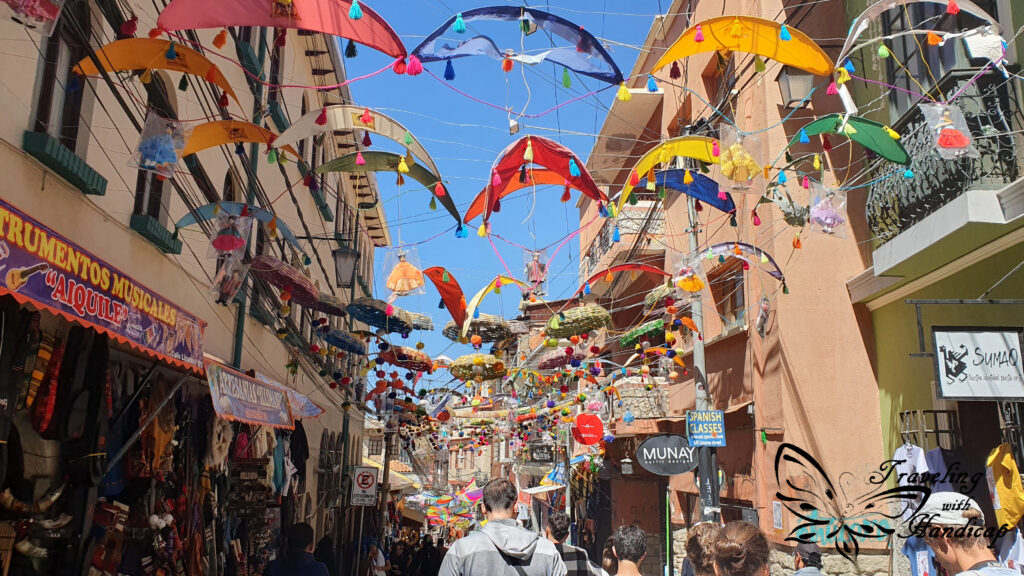
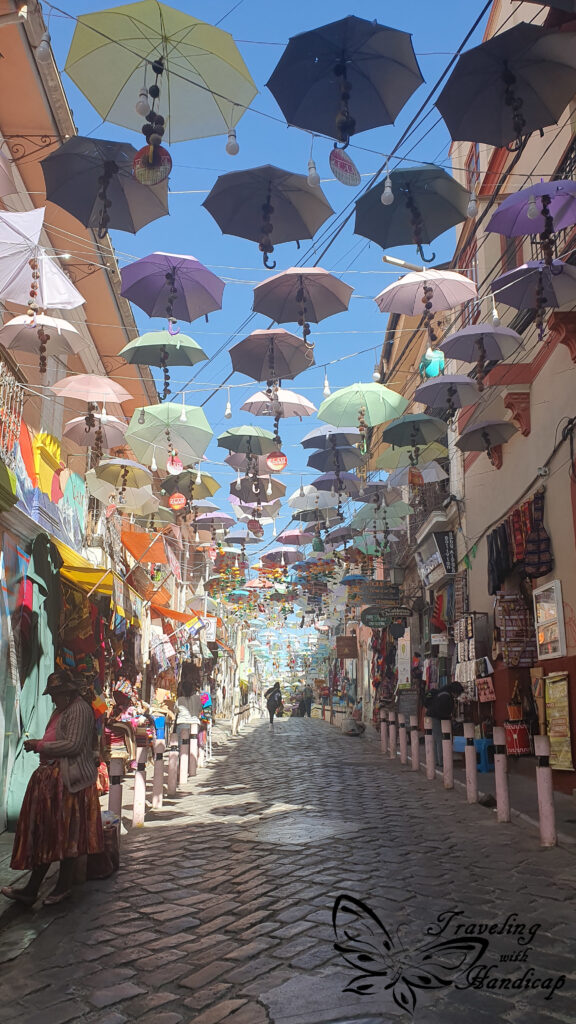
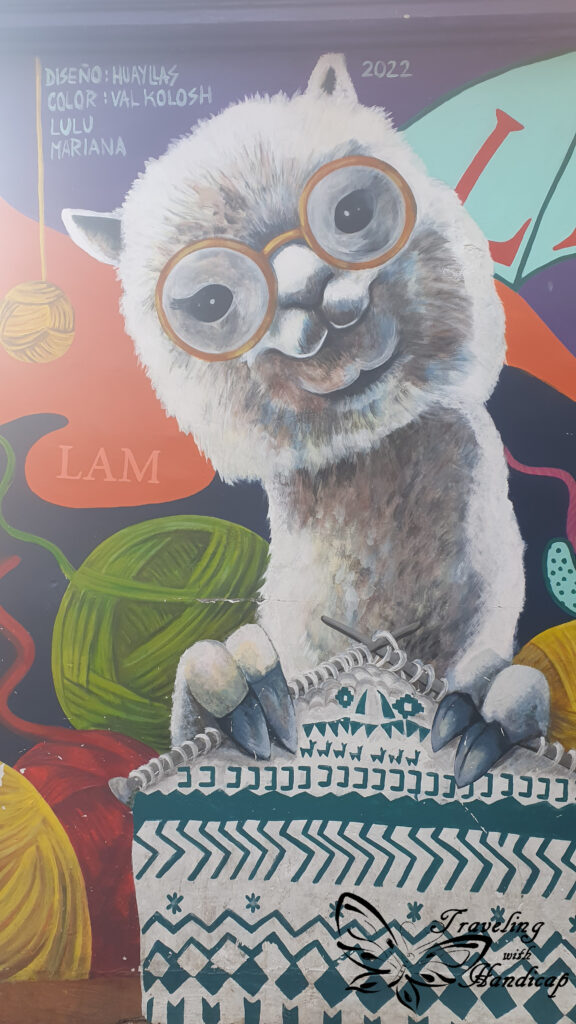
People in La Paz normally don’t go to a “scientific” doctor if they feel sick. They would consult their witch doctor first. The street next to my hostel had many market spaces of different witch doctors. I assume that many of the natural, plant-based products help. There are not only plant-products but also many dead baby-lamas (fetus). These lamas are used for offerings to Pachamama (mother earth). There are legends that for big buildings, a lama fetus is no sufficient offering, but instead a living human body is needed as an offering.
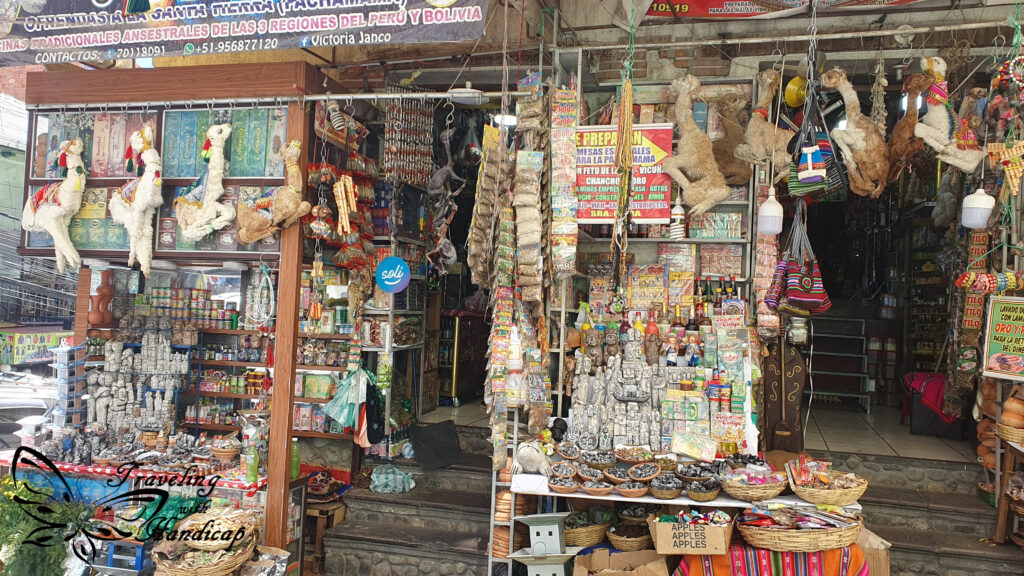

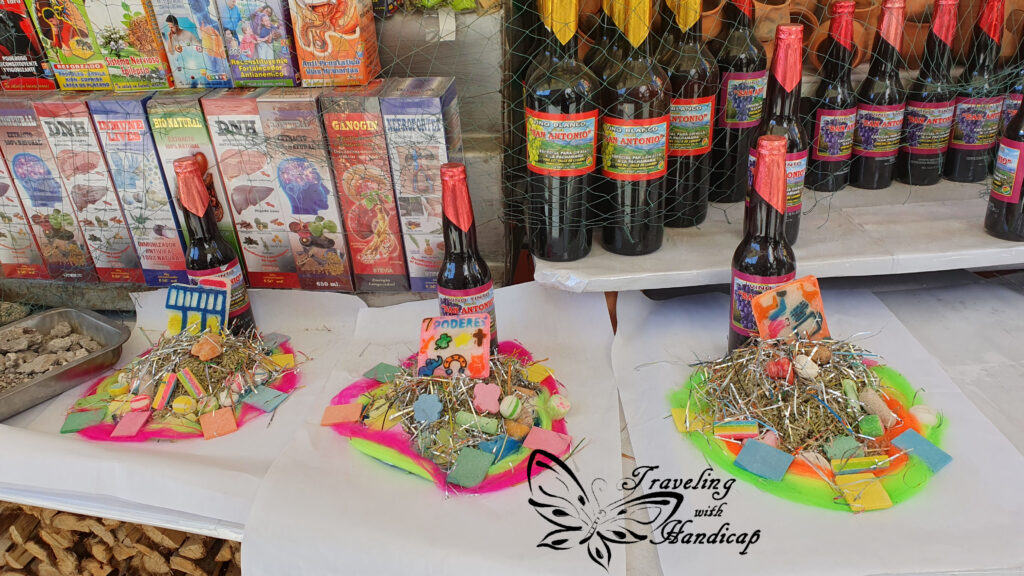
There are some excellent restaurants in La Paz, it is said that there are no other places where you can get such a high quality of food for so less money. Of course, not all food suits the European body well, especially street food or cheap food could be problematic. The guide of the free walking tour told us that dishes in restaurants above 30 Bolivianos have most likely good quality.
There are two bus terminals in La Paz, one for the big tourist buses. The other one is located at the cemetery and is only for minibuses. These minibuses have a set fare of 20 bolivianos (approximately 3 €) to go around to different places reachable within 3 or maybe even 4 hours. Minivans don’t do long distance connections like La Paz – Sucre, therefore you need to take a tourist bus.
El Alto
On Sundays, there is a huge flea market in El Alto. If you don’t look Bolivian, you might be an easy target for pickpockets. However, if you don’t take any valuables and only a little cash, it’s definitely worth to explore. A guide recommended taking the blue gondola, to get an impression of the extensive size of the market. It’s incredibly huge, 3o cuadras I assume.



El Alto is quite similar to La Paz, unfinished house and extensive. The main difference is its altitude and being build on a rather flat landscape, while La Paz is located in an uneven valley. I couldn’t recognize any true “business buildings” similar to La Paz. There are only a few houses which look so different, which don’t really fit. In my opinion, it is sufficient to visit the big market and take the gondolas to get an impression from El Alto, from above.

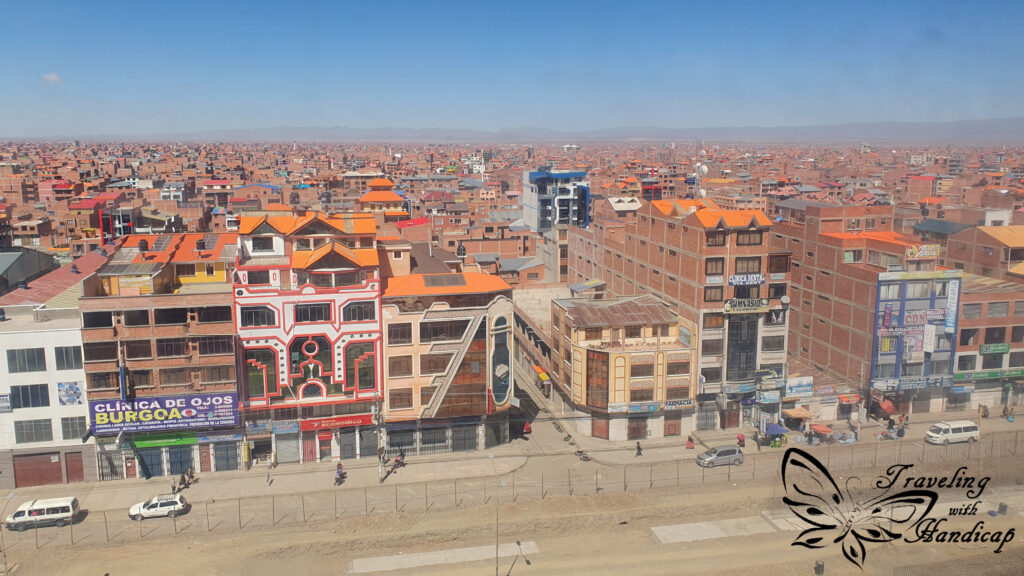

Escaping La Paz – cool adventures in the region around La Paz
Hiking
The area around La Paz is indeed a major location for high altitude hiking. As you are already on the Altiplano, quite high up, you don’t need to make as many additional meters in altitude. Nevertheless, it’s really important that you are acclimatized -by spending at minimum 3 days at an altitude of La Paz before.
There are many great mountains and lagoons, even the 6000 m can be reached. The Huayna Potosí is known to be the most easily climbable 6000 m mountain. If you consider going, I recommend trying a 5000 m day trip first. If you struggle on a mountain of 5000 m, you shouldn’t do the 6000 m. Climbing Huayna Potosí is a (2, or rather recommended) 3-day tour. You need to walk with crampons because there is ice, soft and hard snow. The ice was my barrier, this is because I couldn’t do the Huayna Potosí, unfortunately.
Other famous hikes are:
- Laguna Charquini
- Condoriri
- Pico Austria
- Illimani
- …
Laguna Charquini
I did a day-trip to the Laguna Charquini, a little higher up than 5000 m. This trip was amazing. On the way, we stopped 3 times, to acclimatize. We had two stops at Wila Jalanta, or better at viewpoints from the road. Another stop was at the Cementerio de Milluni, a cemetery of killed miners of 60 years ago. If there is a flower on a cross, the buried person was a woman. Kids got very tiny graves. From there, the view on Huayna Potosí is very scenic.
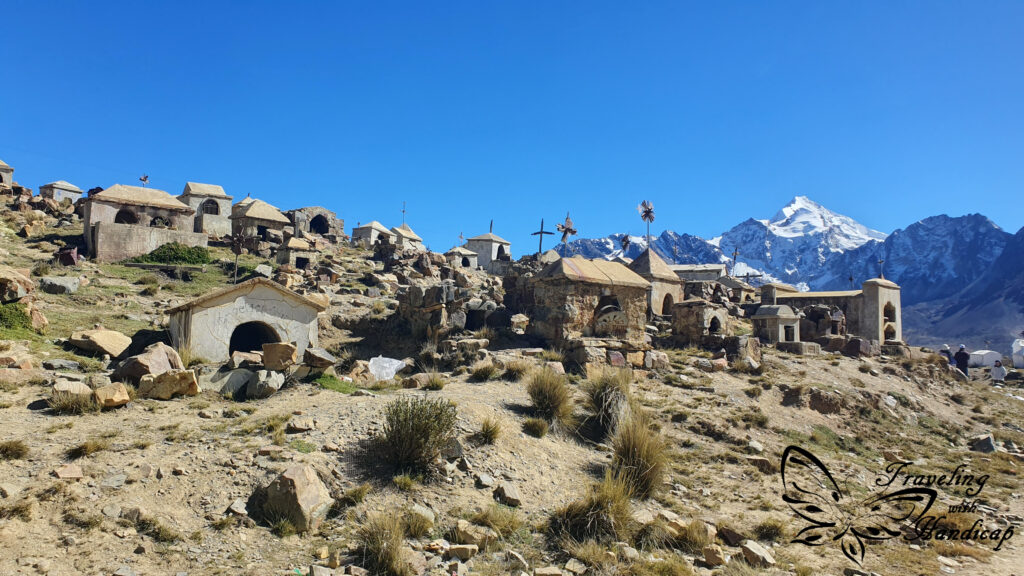
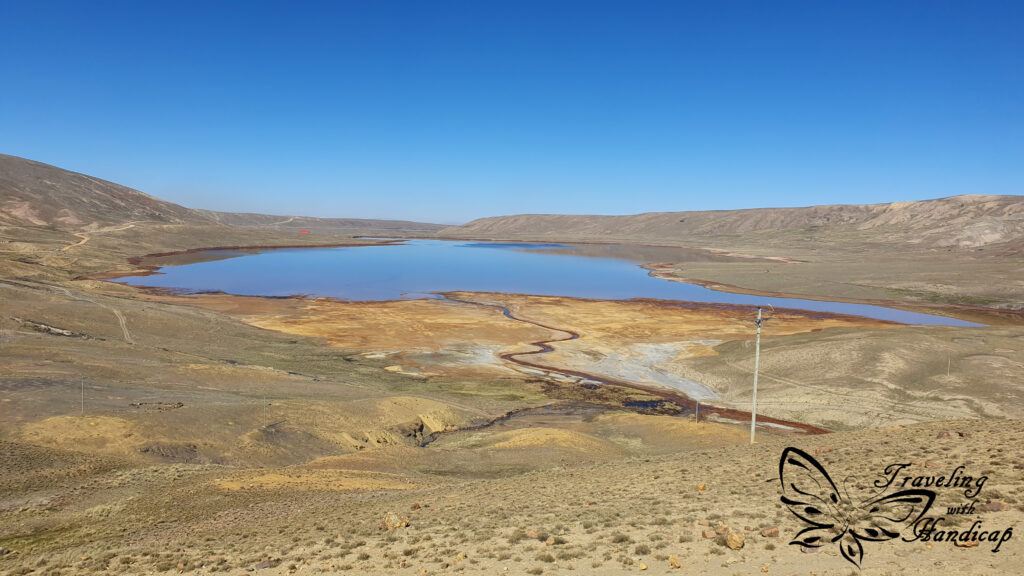
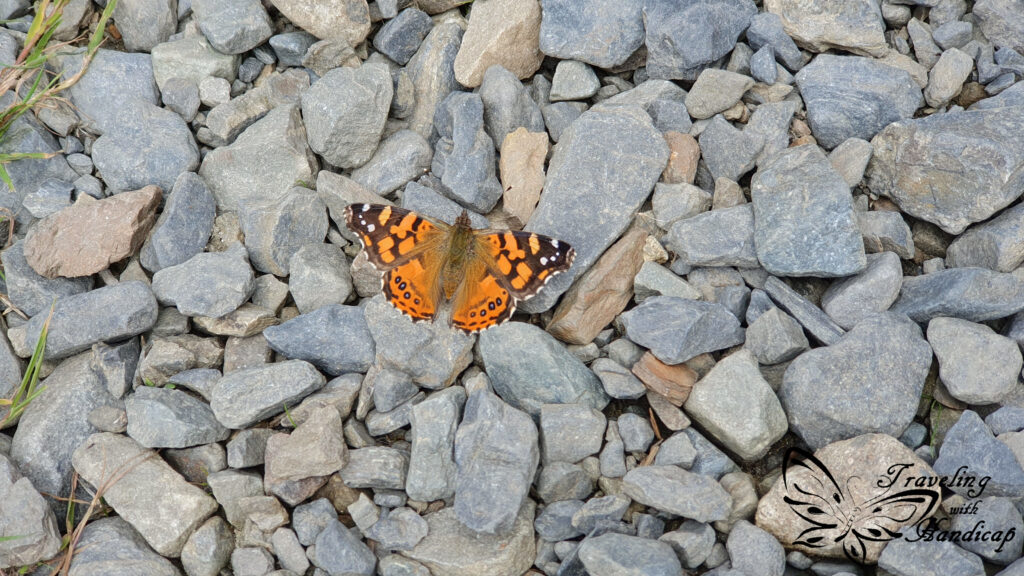

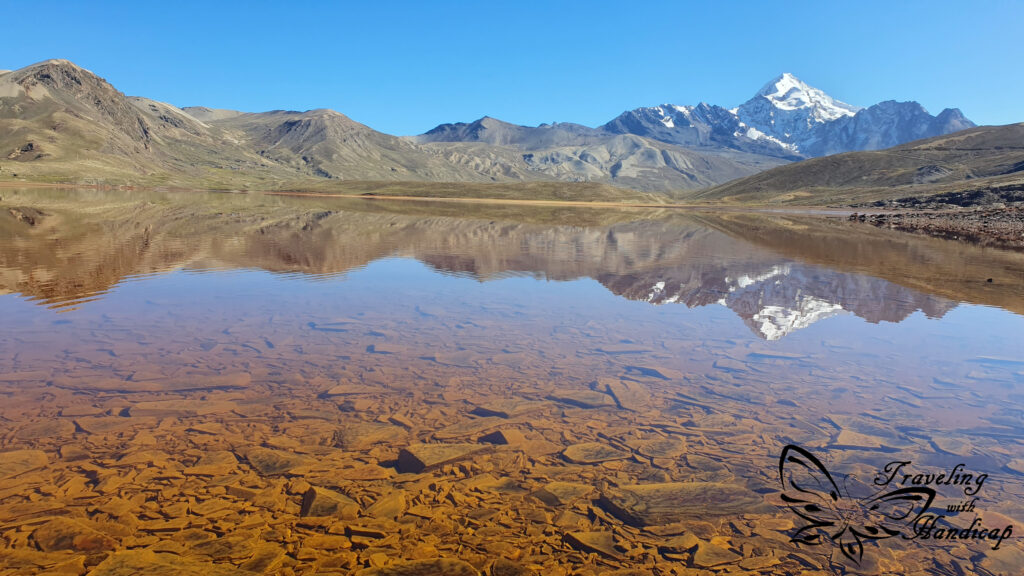
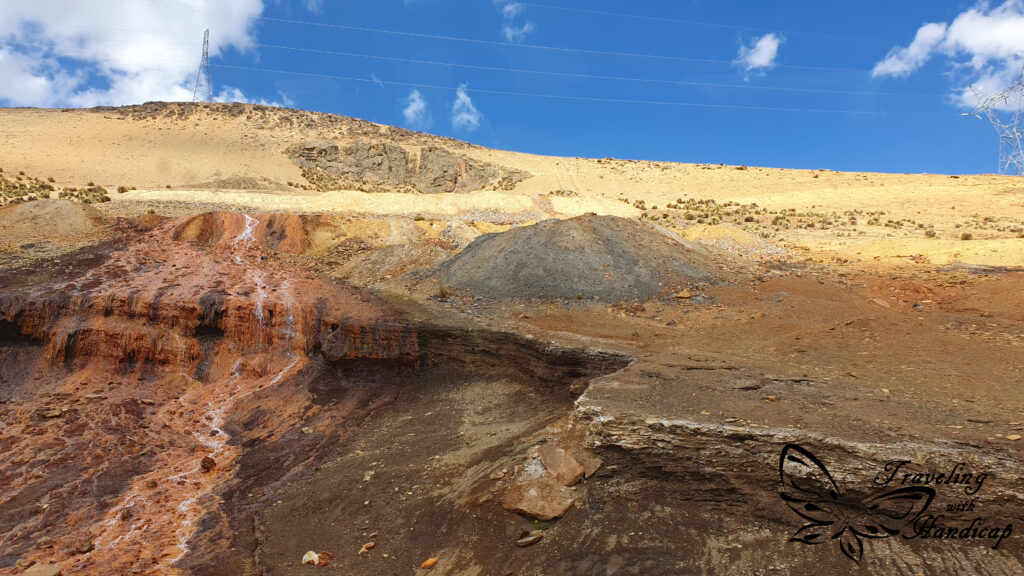
The hike itself was easier than expected. I assume this was because I am always walking slowly, so I didn’t have to force myself to reduce speed. On altitude, you need to walk slowly, you should not eat heavily in the evening before and in the morning before the hike. Just take some chocolate (to get sugar most directly, without heavy digestion work) if you feel you need it while hiking. And, of course, drink a lot. I drank 3l per day and didn’t feel dizzy from the altitude.
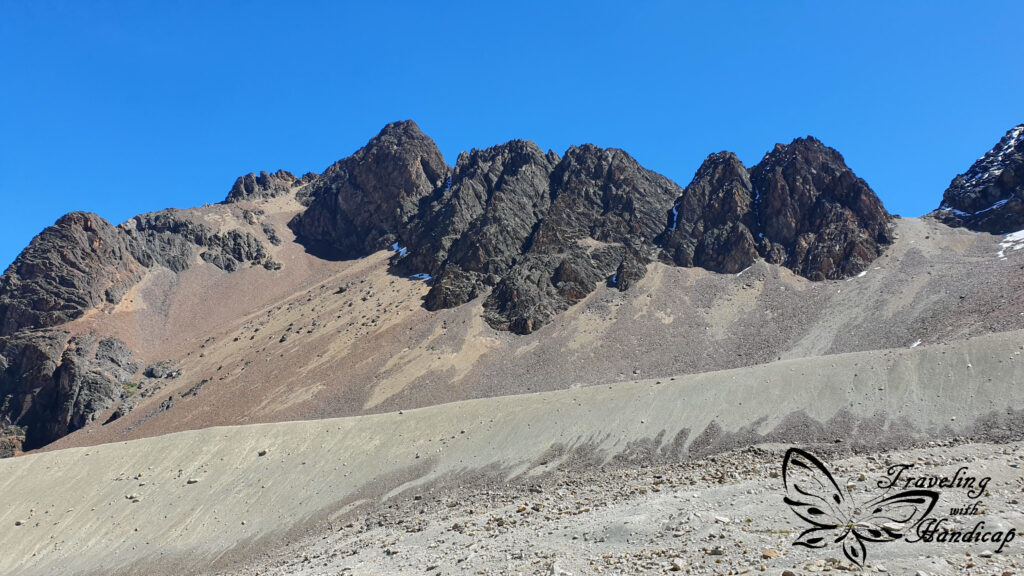

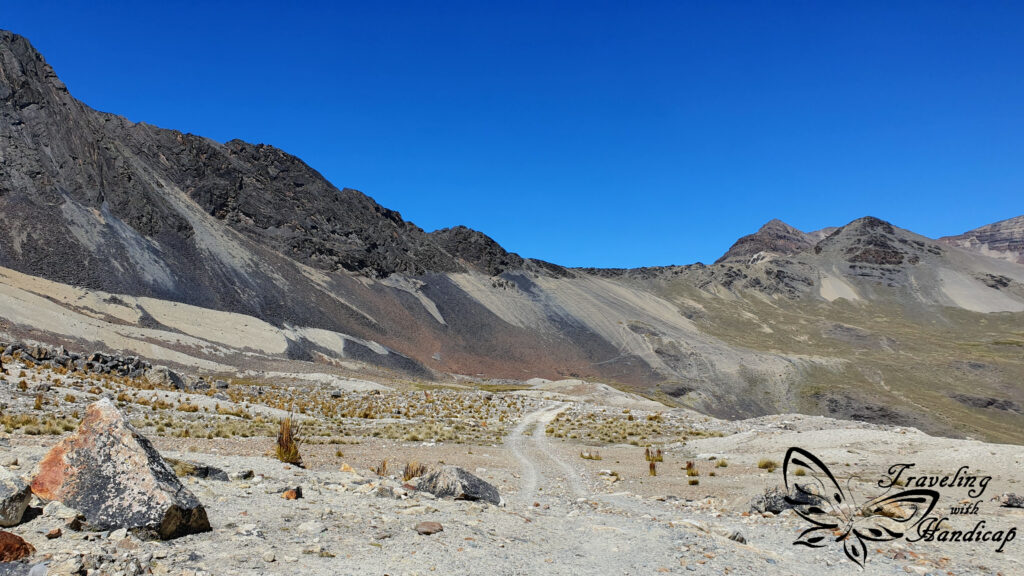
We hiked to the lagoon, but weren’t allowed to hike any further. Because the snow and ice started a few meters up. After a person fell and died from hiking on the ice, this has been restricted. During southern winter, the dry season, you can indeed hike to 5000 m without reaching snow or ice.

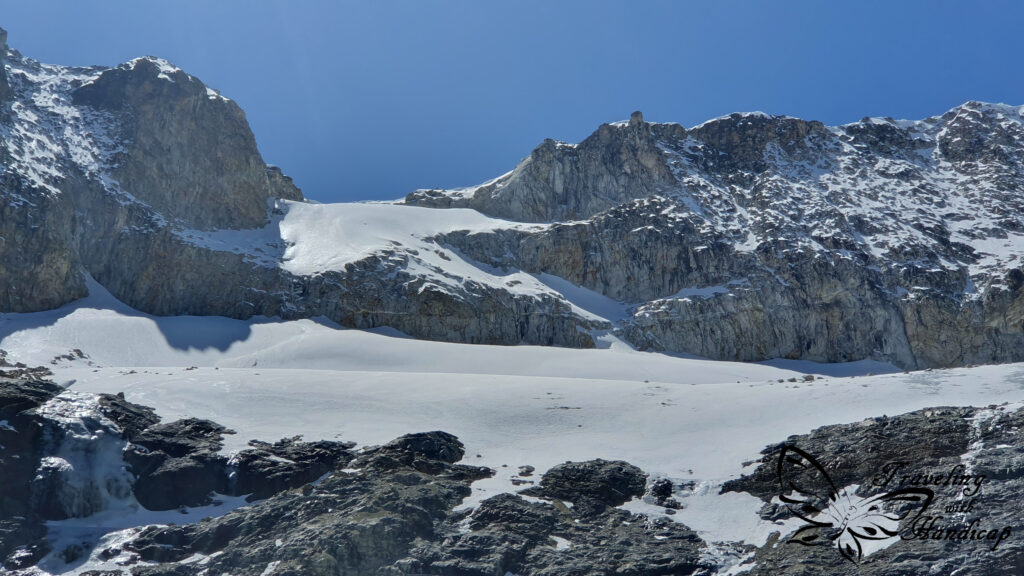

The Death Road
… is very famous among tourists. If you want to do it properly, you should like sitting on a bike for a few hours. Unfortunately, I could not use any of their bikes because the middle bar was quite high up (as normal for mountain bikes). I cannot through my leg over the rear wheel anymore, but no agency had different bikes with a lowered middle bar (low entrance).
This is why I decided to do the tour, but stay in the car. This way, I got it much cheaper since I didn’t have to rent a bike. However, the cars are not allowed to go all the way along the Death Road – as the name says, it’s too dangerous. The road has been blocked for cars a couple of years ago after a parallel road has been finished which is much bigger, paved, and more secure for cars. I could see the first (broader) part of it, then we went back out and took the paved road.
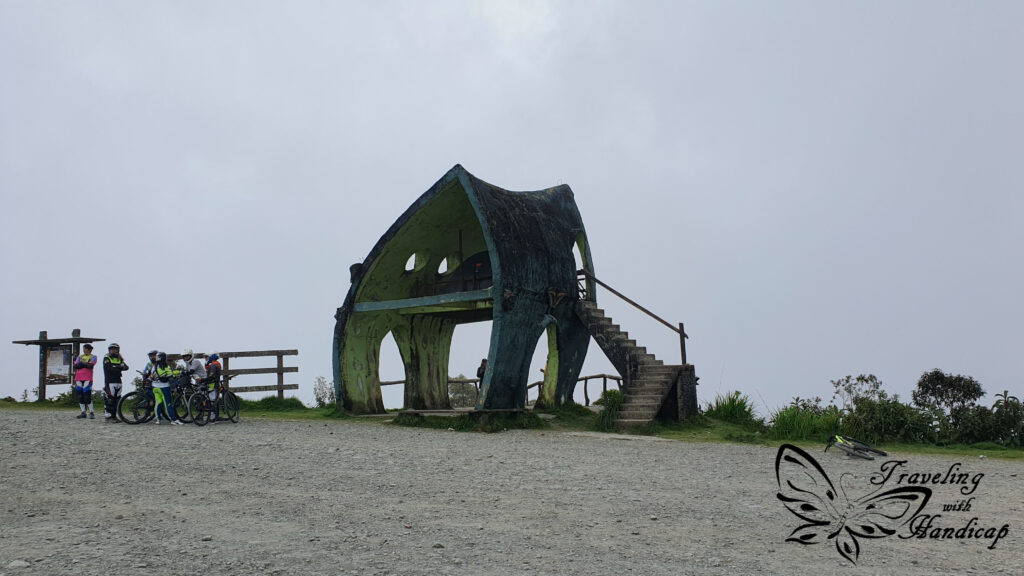
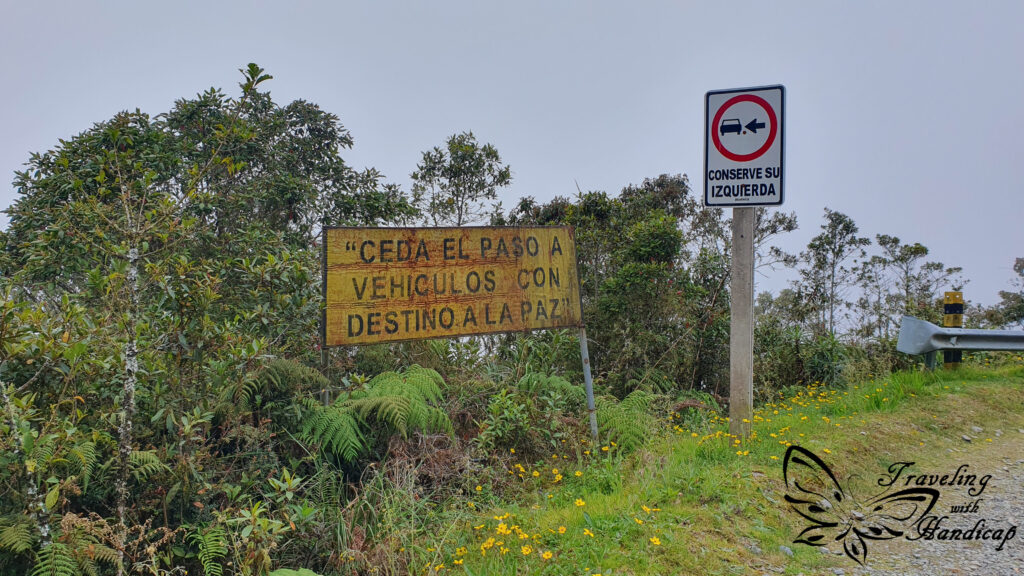
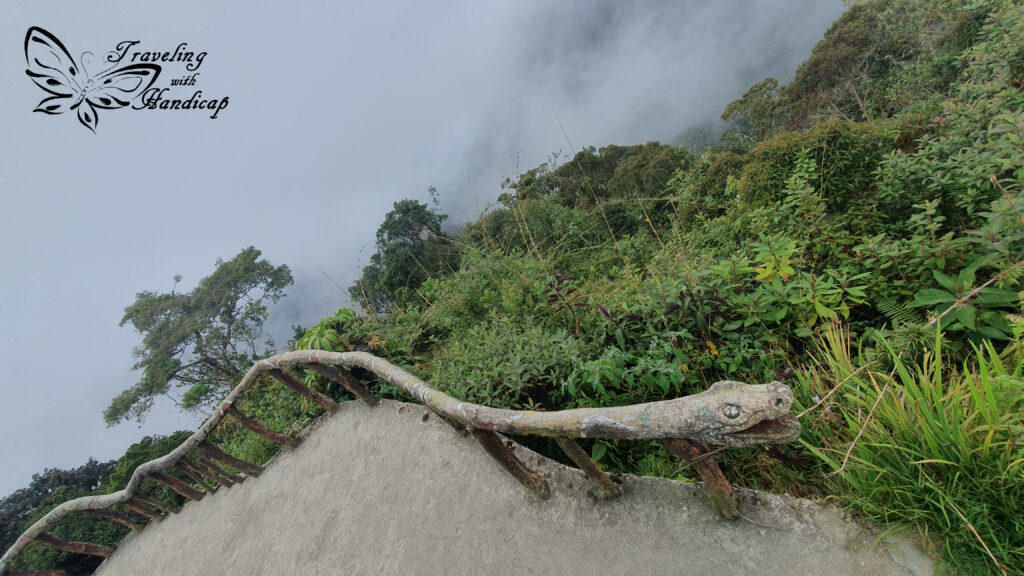
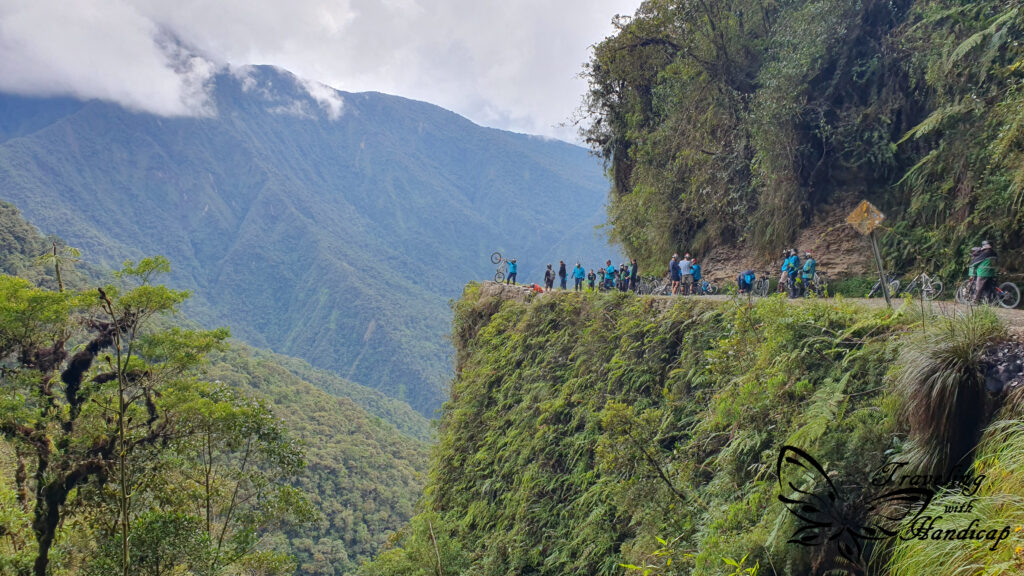

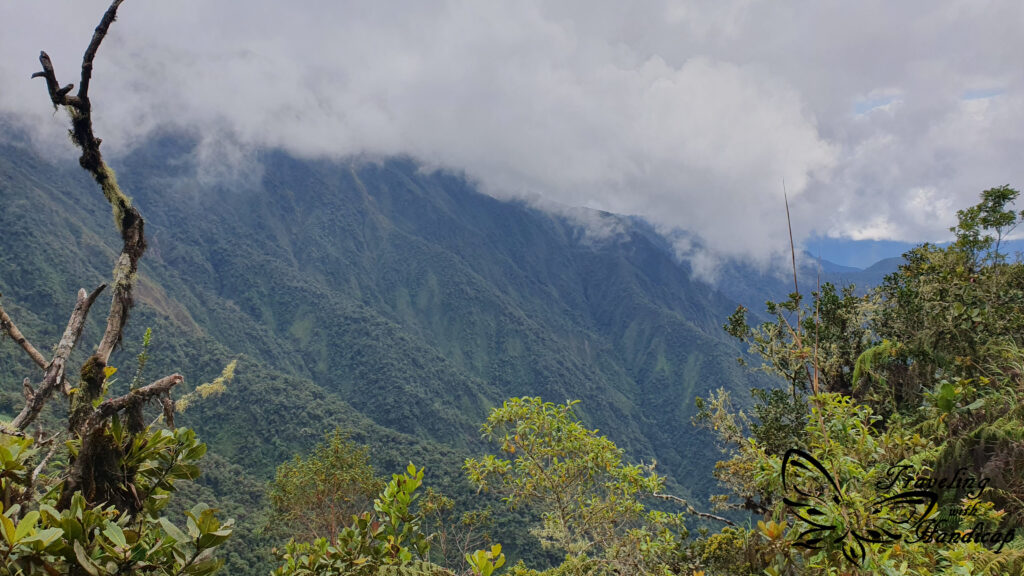
The Death Road finishes close to Coroico, which is at the beginning of the forest within subtropical climate. Coming from La Paz, located in the dry and cold Altiplano, it feels different to go so low in altitude all the way. After taking the road, we stopped at a hotel close to Coroico, for lunch (in my understanding of time, this was dinner) and to swim. However, the sun set while we were eating, so it was quite chilly to go into one of the pools without the heat of the sun. I just sat at the border with my legs in the water and enjoyed the view of mountains, palm trees and colorful flowers.

